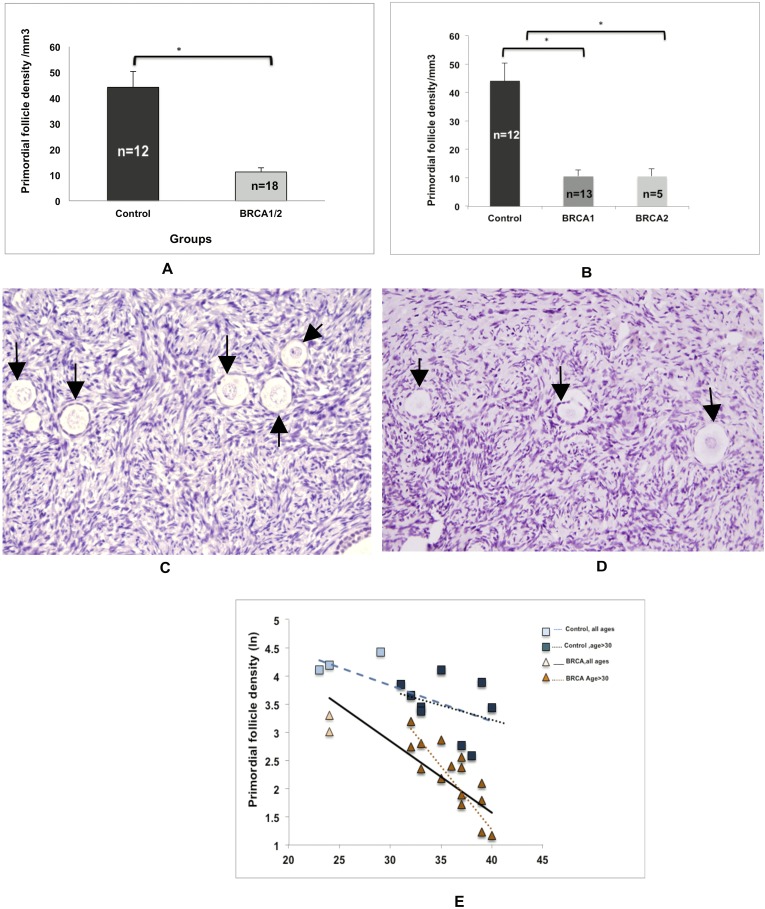Figure 1.
Effect of BRCA mutations on primordial follicle reserve. (A) The mean primordial follicle density was lower in the ovaries of BMCs than in those of controls (11.2 ± 1.59 vs 44.18 ± 6.16 follicles/mm3; P = 0.0002). (B) Both BRCA1 (P = 0.001) and BRCA2 (P = 0.0003) mutations were associated with low primordial follicle reserve. The error bars represent standard error of the mean. Statistical significance is denoted by asterisks (*). (C and D) Representative photomicrographs of primordial follicle density in (C) a control and (D) a patient with a BRCA1 mutation. Arrows show the primordial follicles. (E) Comparison of the linear regression curves by multivariate analysis indicates that there is a sharper decline of primordial follicle reserve (R2 = 0.74; P = 0.0001) in BMC ovaries (slope = −0.1270) than in control ovaries (slope = −0.0634). This difference in the slopes between BMC (slope = −0.2243) and controls (slope = −0.051) became more distinct when the linear regression was limited to those aged >30 years. The squares represent the control group, and the triangles represent the BMCs. Dotted lines represent the analyses that were limited to age >30 years in each group. Refer to the text for complete linear regression analysis results.

